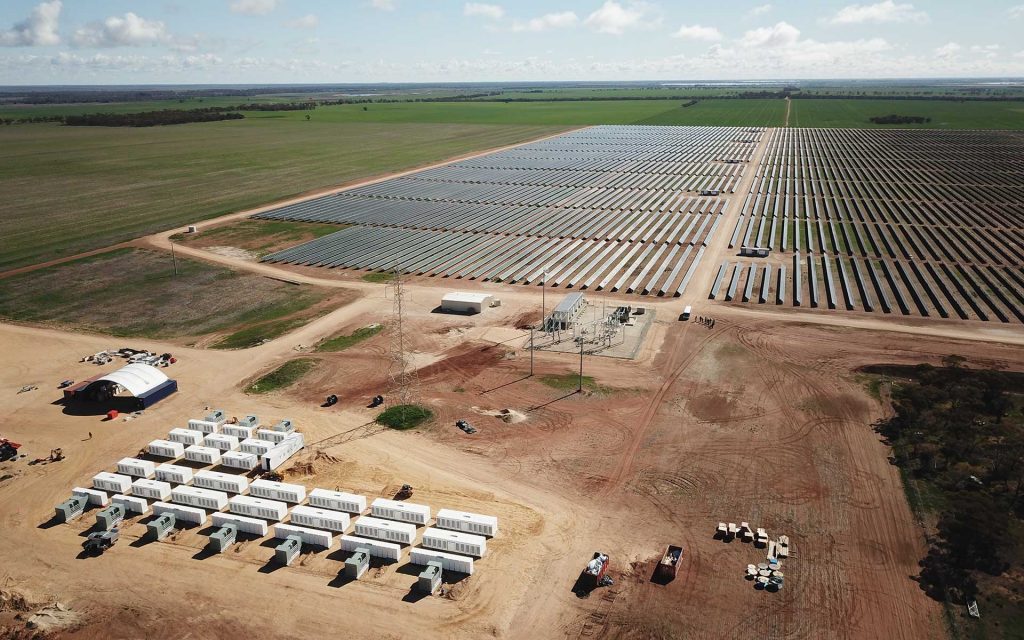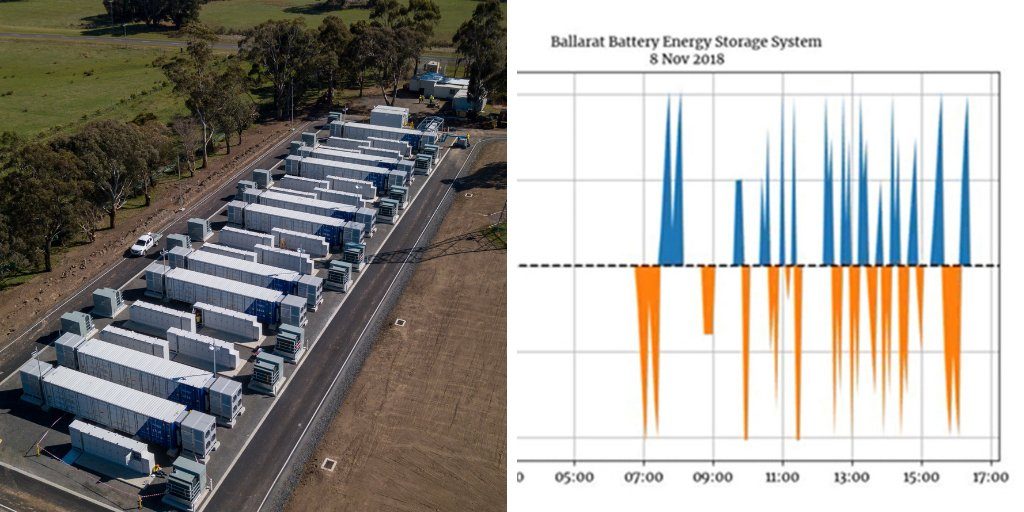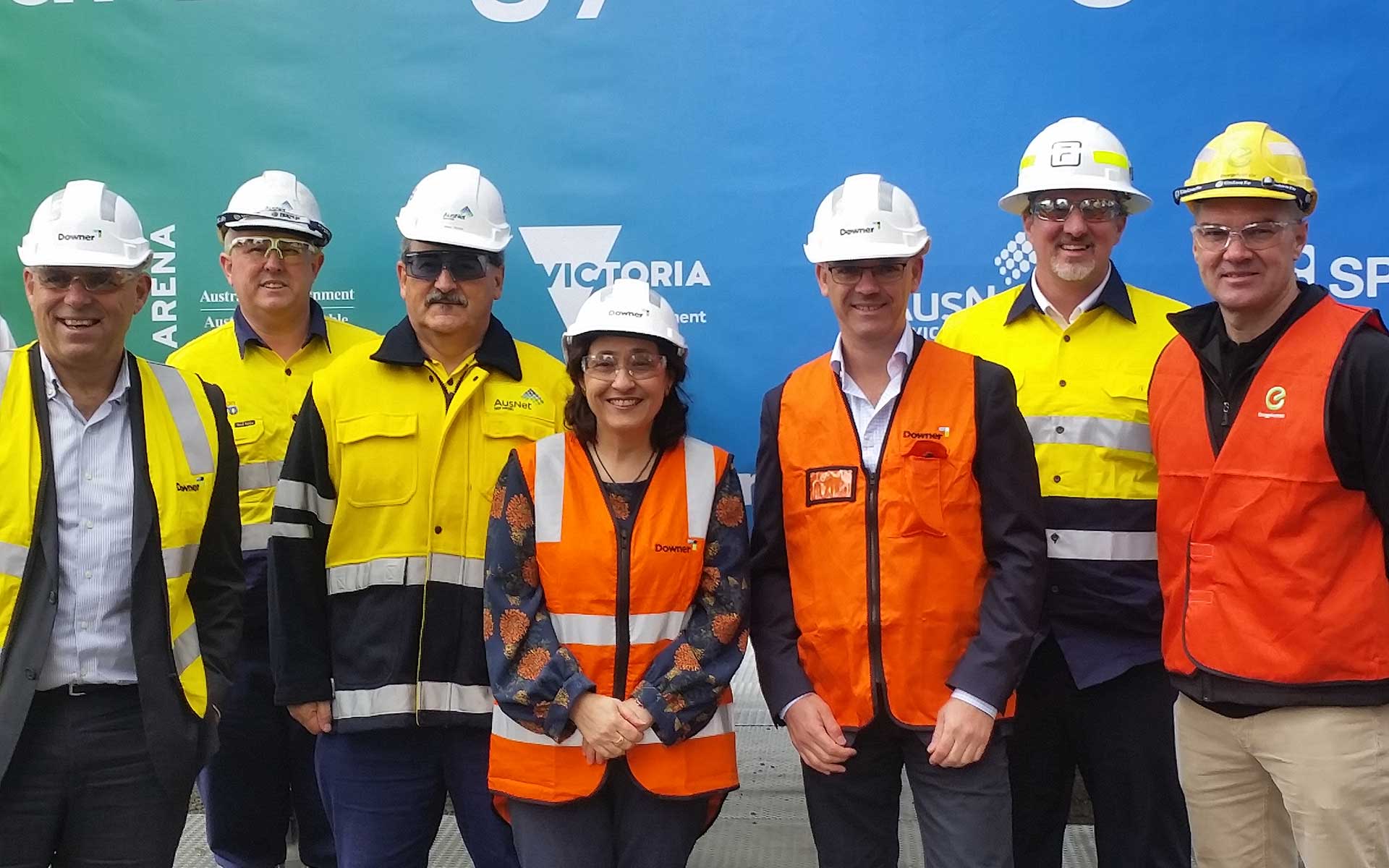Solar battery storage in Victoria charging up for summer
Victoria’s two grid-scale batteries are up and running, ready to bolster the grid as temperatures rise and demand for electricity soars.

Solar battery storage in Victoria is charging up with the Gannawarra Energy Storage System now complete and in the process of being fully commissioned in the next few weeks, just weeks after the official launch of the Ballarat Energy Storage System.
The two grid-connected, utility scale batteries are the first to be built in Victoria.
ARENA have provided $25 million in funding towards the two large-scale storage projects, which has been matched by the Victorian Government as part of its $50 million energy storage initiative, which was originally announced in March this year.
With Electranet’s ESCRI and Infigen’s Lake Bonney batteries in South Australia, ARENA has now funded four grid scale batteries, building on the success of smaller solar and battery hybrid projects at Kennedy and Lakeland.
The Gannawarra solar battery storage project began exporting electricity to the grid in mid-October, and will be commissioned in time for the upcoming summer, predicted to be hotter than last year.
The new batteries have been installed to deliver critical supply and grid stability services in areas of the network where transmission lines are at capacity.
Northern and western Victoria’s hot, dry conditions are made for solar, but constraints in the system are limiting access to these fertile grounds for renewable energy.
This already leads to curtailment during windy and sunny periods, and is limiting opportunities for new generation to come online.
The 25MW / 50MWh Gannawarra battery is co-located with the 60MW Gannawarra Solar Farm near Kerang in the north of the state.
The Gannawarra project is Australia’s largest battery to be integrated with a solar farm, and is one of the first examples of an existing solar farm being retrofitted with battery storage.
Australian renewable energy company Edify Energy oversaw the development and construction of the battery, in a joint venture with co-investor Wirsol.
The battery system uses Tesla’s lithium ion powerpack technology.
The Gannawarra battery will be jointly owned by Edify and Wirsol and will be operated by EnergyAustralia, who also have a long term offtake agreement for the solar farm.
EnergyAustralia is also the operator of the Ballarat battery now registered and working.

Two-and-a-half hours due south, the Ballarat Energy Storage System (BESS) is situated at the junction of four major transmission lines at AusNet Services’s substation.
The 30MW / 30MWh Ballarat system was completed by a consortium led by Downer Spotless (Spotless being now part of the Downer Group) last month using Fluence battery technology.
The Fluence-supplied battery was completed in October and has already begun feeding into the grid.
BESS is owned by AusNet Services and has been built at their terminal substation – where it will help to deliver critical supply, grid stability and security in a congested area of the network.
BESS has the capacity to power 20,000 homes for one hour during a peak demand event.
Able to respond to fluctuations in the grid within microseconds, the new batteries will play an important role in stabilising Victoria’s power supplies ahead of a forecast hot summer.
Speaking at the launch of the Ballarat Energy Storage System, ARENA CEO Darren Miller highlighted the ability of large, grid-connected batteries to support the network as more renewable energy comes online.
“These batteries mean we can store energy from windy and sunny times for later use, to keep the lights on and bring prices down,” Darren Miller said.
“This Ballarat project shows how batteries can support a congested transmission terminal at a critical location. Not only does this strengthen the grid, it also avoids the need to invest in expensive upgrades to the terminal,” he said.
As well as avoiding expensive network upgrades, the batteries will also generate revenue through trading market capacity contracts.
“ARENA is excited about the completion of both batteries in Victoria which – along with the successful large-scale batteries in South Australia – will continue to play an important role in Australia’s transition to affordable and reliable renewable energy,” Miller said.

Edify Energy CEO John Cole sees this project being a win for Victorian and Australian energy consumers.
“The entire sector is aware of the potential for storage projects to not only provide invaluable services to the market and the grid, but also to enable the roll out of more and more clean and cheap renewable energy. Solar plus storage is a ‘category killer’ and we are very proud to have developed, structured and overseen the construction of two projects that together can serve as a model for wider adoption of storage into the market and the realisation of a high renewable future.
“We intend to continue the roll out of storage and renewables projects to help our retail and corporate customers achieve their energy and sustainability objectives.” Mr Cole said.
EnergyAustralia Managing Director Catherine Tanna said the project is an example of what we can look forward to in a modern energy system that delivers reliable, affordable and cleaner energy for customers.
“The ability to store and quickly release energy will help integrate renewables in the system as coal-fired plants progressively retire,” Ms Tanna said. “These are the new technologies and approaches that will come to underpin our energy system, keeping customers’ lights on and their costs down.”
South Australian battery kicking goals
Building on the success of the Hornsdale Power Reserve in South Australia, the two Victorian batteries will be up and running in time to help stabilise power supplies over summer.
Since opening in late 2017, South Australia’s giant Tesla battery (which resulted from a bet between billionaires Mike Cannon-Brookes and Elon Musk) has performed strongly.
AEMO’s executive general manager of operations Damien Sanford recently reflected on the early success of the Hornsdale Power Reserve battery, telling the ABC that the Hornsdale Power Reserve’s fast responses to fluctuations in supply have been “very encouraging”.
AEMO’s first Quarterly Dynamics Report of 2018 showed the cost of FCAS falling by nearly $33 million, or 57 per cent – largely because of the introduction of the Hornsdale Power Reserve.
“We’ve been pleasantly surprised and would encourage more of this technology into the grid,” Mr Sanford said.
Early results from South Australia show the strength of grid-scale batteries to respond rapidly to shortfalls in supply. Frequency Control Ancillary Services (FCAS) has traditionally been performed by coal and gas plants, but batteries are proving to be able to stabilise the grid far more quickly and at a fraction of the price.
Bloomberg predict Australia will lead solar battery storage boom
Bloomberg New Energy Finance’s 2018 forecast predicts that Australia will be a global leader in grid-scale battery storage.
The expectations are that battery storage will become cheaper, predicting that prices will drop by 50 per cent by 2030 as the industry grows to be worth AUD$1.7 trillion – more than double their previous forecasts.
BNEF expect that that grid-scale batteries will be the second-largest source of demand for battery storage, following only electric vehicles.
“Costs have come down faster than we expected,” BNEF analyst Yayoi Sekine said. “Batteries are going to permeate our lives.”
Australia is expected to be one of nine countries leading the big battery charge.

ARENA